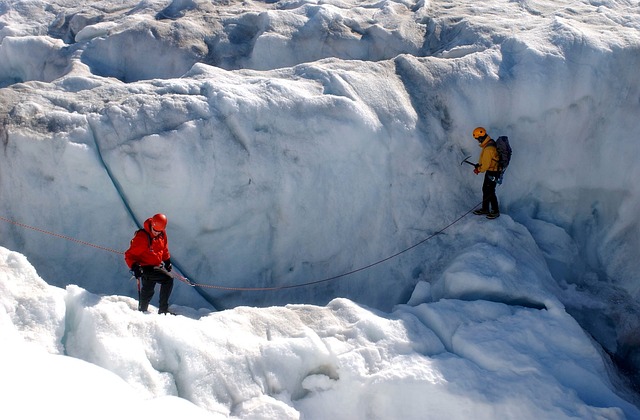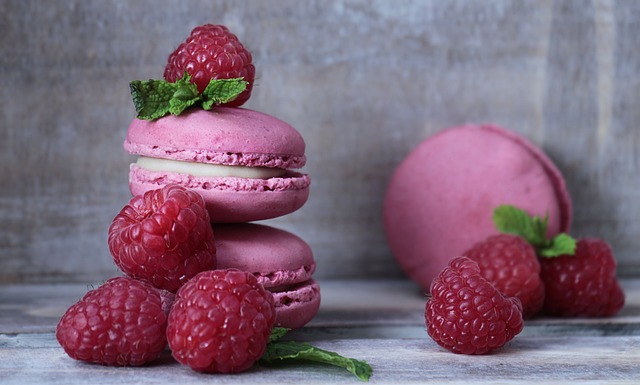10 Lookalike Concepts That Are More Different Than You Realize
Have you ever spent way too long thinking two totally different things were the same—just because, well, they kinda seemed the same? Maybe you called every soft drink “Coke,” whether it was Pepsi, root beer, or even Dr Pepper. It’s an easy trap to fall into. Sometimes it’s just habit, and sometimes… we just didn’t care enough to check.
Turns out, this kind of mix-up happens more often than you’d think. And honestly? We’d bet good money that you’ve confused at least one of the things on this list with something else at some point. Don’t worry—so did the rest of us.
10. Crevice and Crevasse Are Not the Same Thing

Picture this: you’re out on a peaceful hike. The sun’s shining, birds are chirping, and you’re feeling great—until bam, the ground gives way beneath you and you’re falling into the earth like some kind of action movie extra. But here’s the question: did you just fall into a crevice or a crevasse?
They both mean a crack, sure, but not the same kind of crack. The words share a root—Anglo-French crevace, meaning “to break”—but they’ve split off into their own meanings.
A crevasse is big, deep, and specifically found in ice, like glaciers. Think dramatic, deadly, and freezing cold. On the other hand, a crevice is smaller, often just a surface crack, and happens in rock or earth.
If you were strolling across a glacier when it split open—yep, you fell into a crevasse. If it happened on a mountain trail? That’s a crevice. One’s a nuisance. The other’s a plot twist.
9. TNT is Not Even Close to Dynamite

You’ve probably heard the song TNT by AC/DC, where the chorus confidently declares that the singer is “TNT, I’m dynamite.” With all due respect to Bon Scott, that’s not entirely accurate. TNT and dynamite, while both explosives, are actually two very different things.
TNT, or trinitrotoluene, is a yellow, crystalline substance discovered in 1863. While it’s definitely explosive, it’s not nearly as volatile as dynamite. The benefit of TNT is that it’s much more stable and safer to handle, which is why it’s used in various applications, from military to mining.
Dynamite, on the other hand, was invented four years later, in 1867, by Alfred Nobel—yes, the same Nobel who created the Nobel Prize. Dynamite is made from nitroglycerin, which is highly unstable, but Nobel stabilized it by combining it with diatomaceous earth and sodium carbonate. This made it safer to handle while still being incredibly powerful.
A stick of dynamite is packed with absorbent material soaked in nitroglycerin, making it a far more volatile explosive compared to TNT. They might both make things go boom, but chemically, they’re worlds apart. In fact, when TNT was first discovered, it was so hard to get it to explode that it wasn’t even considered an explosive compound, unlike dynamite.
8. Chrysalis vs. Cocoon: The Surprising Difference in Butterfly and Moth Transformations

One of the most fascinating transformations in nature is the journey of a caterpillar turning into a butterfly (or moth). It’s not an overnight magic trick – it’s a complex process that requires preparation. But here’s a question that often trips people up: does the caterpillar form a chrysalis or a cocoon? The answer might surprise you. Butterflies form chrysalises, not cocoons. Let’s break it down.
First, let’s clear up the confusion. While both butterflies and moths undergo a similar transformation – called metamorphosis – the way they prepare for it is different. Butterflies form a chrysalis, while moths create a cocoon. These two structures are not the same, and their differences go back to how the caterpillars prepare for their transformation.
For butterflies, the process starts with a fascinating bit of biology. As caterpillars grow, they molt – meaning they shed their old skin to make room for a new, larger one. But when it’s time to transform into a butterfly, something unique happens. Instead of shedding its final layer of skin, the caterpillar’s body undergoes a transformation. That final skin hardens into a chrysalis, which becomes the protective casing where the butterfly develops. Inside, the caterpillar essentially liquefies and reorganizes itself into a butterfly. It’s like nature’s version of recycling on steroids!
Moths, on the other hand, take a different approach. Most moths spin a cocoon using silk produced by special glands in their bodies. This silk is woven into a protective covering, often with bits of leaves, twigs, or other natural materials for extra camouflage. Inside the cocoon, the caterpillar undergoes its own version of metamorphosis, eventually emerging as a moth.
Here’s the key difference: butterflies don’t make cocoons, and moths don’t form chrysalises. Butterflies skip the silk-spinning stage entirely, relying on the hardened chrysalis for protection. In fact, butterflies don’t produce silk at all, which is why they rely on the natural structure of the chrysalis.
7. A Heart Attack is Not the Same as Cardiac Arrest

Imagine this: You’re at a restaurant, and suddenly, someone at the next table grabs their chest and collapses. What’s happening? Are they having a heart attack, or are they experiencing cardiac arrest? Despite how often these terms are tossed around interchangeably in pop culture, they actually refer to two very different conditions.
A heart attack occurs when there’s a blockage in one of the arteries that supply blood to your heart. Because blood (and the oxygen it carries) can’t reach part of your heart muscle, that section starts to die. This can happen quickly or slowly, depending on various factors. It’s critical to get medical attention immediately because, without treatment, the damage can worsen.
Cardiac arrest, which can sometimes be triggered by a heart attack, is something different entirely. It happens when your heart stops beating altogether. While a heart attack can cause this, cardiac arrest can also result from other issues that disrupt the normal rhythm of your heart, such as arrhythmias. When this occurs, your heart isn’t pumping blood, and without blood circulation, you essentially die. CPR or immediate medical intervention is required to restart the heart and prevent death.
While a heart attack can lead to cardiac arrest, the two conditions are distinct and require different responses. One involves a blockage, and the other involves the heart stopping altogether. Time is of the essence in both cases, and knowing the difference can save a life.
6. Pounds vs. Kilograms: Measuring Force vs. Mass

When it comes to weight and mass, most of us use the terms pounds and kilograms interchangeably. If you weigh 200 pounds, you might also say you weigh 90.72 kilograms, and for everyday purposes, that’s close enough. But here’s the catch: pounds and kilograms don’t actually measure the same thing.
Pounds are a measure of force or weight, while kilograms measure mass. That distinction might seem small, but it’s actually pretty important – especially when you start thinking about physics or space travel.
To break it down:
- Mass is a measure of how much matter something has. It doesn’t change, no matter where you are. If you’re on Earth, the Moon, or floating in space, your mass stays the same.
- Weight, on the other hand, is the force exerted on that mass by gravity. So, while your mass is constant, your weight can change depending on the gravitational pull of the planet (or moon) you’re on.
Here’s where the math comes in. On Earth, we’ve agreed that 1 kilogram equals 2.2 pounds of force. That’s why a person who weighs 90.72 kilograms on Earth would weigh about 200 pounds. But that equivalence only works because of Earth’s gravity.
Take that same person to the Moon, and things get interesting. The Moon’s gravity is about one-sixth as strong as Earth’s. That means their weight would drop significantly – they’d weigh about 33 pounds (or 15 kilograms of force) on the Moon. But here’s the key: their mass would still be 90.72 kilograms. Mass doesn’t change, no matter where you go.
This is why scientists and engineers prefer to use mass (measured in kilograms) when doing calculations. Mass is a much more reliable measure because it’s constant. Weight, on the other hand, can fluctuate depending on gravity or even acceleration (like in a moving vehicle).
5. Snow Leopards Are Not the Same as Leopards

Snow leopards are truly majestic creatures, known for their stunning appearance and elusive nature. There are an estimated 4,000 to 6,500 of these rare cats in the wild, making them one of the most iconic and endangered species. Their thick fur and excellent camouflage allow them to thrive in the harsh, snowy mountain environments, blending into the rocky landscape with ease.
However, despite their name, snow leopards are not actual leopards. In fact, they belong to a separate branch of the panther family. While snow leopards share the same spotted coat pattern as leopards, genetically, they are closer to tigers.
There are five major types of big cats: lions, tigers, leopards, jaguars, and snow leopards. Snow leopards are in their own unique category, setting them apart from the other four in terms of genetics and behavior. So, while they may look like leopards, snow leopards are a distinct species entirely, and their evolutionary link is much closer to tigers than to leopards.
4. Concrete vs. Cement: They’re Related, But Not the Same Thing

If you’ve ever walked down a sidewalk or driven over a bridge, you’ve probably wondered: am I standing on concrete or cement? It’s a common mix-up, and while you could technically argue either way, the correct answer is concrete. But here’s the twist – cement is part of what makes concrete. Confused? Let’s break it down.
What’s the Difference?
- Cement is an ingredient, not the final product. Think of it as one of the building blocks. It’s made by heating limestone, silica, and other materials in a kiln, then grinding them into a fine powder. When you add water to cement, it forms a paste. But on its own, cement is just the “glue” that holds everything together.
- Concrete, on the other hand, is the final product. It’s made by mixing cement with other materials like gravel or rocks (called aggregates) and water. The result? A strong, durable material used for everything from sidewalks to skyscrapers.
Here’s a quick way to remember it: cement is an ingredient in concrete, just like flour is an ingredient in cake. You wouldn’t call a cake “flour,” and you shouldn’t call a sidewalk “cement.”
The Role of Aggregates
To make concrete, you need more than just cement and water. The aggregates – usually gravel or crushed stone – are crucial. They give concrete its strength and structure. If you skip the gravel and just mix cement with sand and water, you’re not making concrete. You’re making mortar, which is used for things like bricklaying or filling gaps.
The Environmental Cost
Here’s a fun (and slightly alarming) fact: cement production is a major contributor to CO2 emissions. In fact, the process of heating limestone in kilns to make cement releases a significant amount of carbon dioxide – about 8% of the world’s total CO2 emissions come from cement production. That’s a huge environmental impact for a material that’s used everywhere.
Concrete, as the most widely used substance in the world, carries that burden along with it. While efforts are being made to create more sustainable concrete (like using recycled materials or capturing CO2 during production), the industry still has a long way to go to reduce its carbon footprint.
Why It Matters
Well, besides being a fun trivia fact, understanding the difference between cement and concrete helps you appreciate the science and engineering behind the materials we use every day. It also highlights the importance of innovation in reducing the environmental impact of something as ubiquitous as concrete.
The next time you’re walking on a sidewalk or admiring a modern building, you’ll know: you’re looking at concrete, made with cement and a bunch of other ingredients. And maybe, just maybe, you’ll think about how we can make it greener for the future.
3. Strangulation is Not the Same as Choking

Imagine it’s late at night, and you’re navigating the spooky woods of Camp Crystal Lake with Hannibal Lecter as your unlikely companion. You’re avoiding a guy in a Scream mask and haven’t slept in days because of Freddy Krueger. Suddenly, someone attacks you from behind and pulls a cord around your neck. Are you choking or being strangled?
Choking and strangulation are distinctly different. To put it simply, choking is an internal obstruction, while strangulation is an external force. For example, you might choke on a burrito, but if a rope is wrapped around your neck, you’re being strangled.
Here’s the breakdown: choking occurs when something blocks your trachea (windpipe), preventing air from reaching your lungs. This can happen if you swallow something that gets lodged in your airway. Strangulation, on the other hand, happens when external pressure—like a rope or hands—compresses your neck and trachea, restricting airflow.
While choking can happen accidentally (such as when eating), strangulation is often intentional, especially in violent situations. So, while both restrict your ability to breathe, the mechanisms and causes are very different.
2. Macarons vs. Macaroons: A Sweet History of Similar Names, Different Treats

It’s a common mix-up in the dessert world: macarons versus macaroons. For years, many people didn’t even know the difference. But as foodie culture took off and desserts like macarons became trendy (thanks in part to shows like Iron Chef), the question arose – are they the same thing? The answer is a resounding no, but their shared origin story makes them fascinating cousins in the dessert family.
What’s the Difference?
- Macaroons: These are classic drop cookies, often made with shredded coconut, whipped egg whites, and sometimes sweetened condensed milk. They’re baked until golden and crispy on the outside, chewy on the inside, and are often dipped in chocolate for an extra treat. Some variations skip the oven entirely and use oats or nuts to create no-bake versions, sometimes called haystacks.
- Macarons: These are the fancy, colorful sandwich cookies you’ve probably seen on Instagram. Made from almond flour, egg whites, and sugar, macarons are baked into thin, slightly crispy cookies with a soft, chewy interior. The magic happens when you sandwich two macaron cookies together with a filling like ganache, buttercream, or jam.
The key differences? Texture, ingredients, and presentation. Macaroons are more rustic and often coconut-based, while macarons are delicate, precise, and as much about presentation as they are about flavor.
A Shared Origin
Despite their differences, macarons and macaroons share a common origin. Both trace their roots back to Italy, where they were originally made with ground almonds. From there, they took separate paths:
- Macaroons evolved in European baking traditions, becoming a staple in places like France and the United States, often associated with holidays like Passover (thanks to their kosher-friendly ingredients).
- Macarons, on the other hand, were perfected in France, where they became the epitome of haute cuisine. The French elevated the simple almond cookie into an art form, adding vibrant colors, intricate designs, and luxurious fillings.
Why the Confusion?
The similarity in names doesn’t help. Both words come from the Italian “maccarone” or “maccherone,” which refers to a paste or dough. Over time, the names stuck, even as the desserts diverged into their own unique forms.
Which One Should You Try?
If you’re a fan of chewy, coconutty cookies with a hint of chocolate, macaroons are your go-to. But if you’re looking for a more sophisticated, Instagram-worthy treat that’s all about precision and flavor, macarons are the way to go.
The next time you’re debating which dessert to indulge in, remember: while they share a name and a history, macarons and macaroons are as different as they are delicious. And hey, there’s no wrong choice – both are a sweet way to satisfy your dessert cravings!
1. Captions and Subtitles Are Not the Same

In 2022, a survey of 1,200 people found that 50% of viewers watch TV with captions on, which is a pretty significant figure. But why are subtitles so appealing? There are many reasons, from poor sound mixing to bad speaker placement. However, it’s important to note that captions and subtitles are not the same thing, even though people often use the terms interchangeably.
Subtitles are typically added to movies by the filmmakers or distributors, especially when films are being made available in different language markets. Their main purpose is to translate dialogue from one language to another, so viewers can understand what the characters are saying.
Captions, on the other hand, are primarily intended for people who are hard of hearing. They provide a written version of all the audio in a show or movie, including dialogue, sound effects, and music cues, ensuring that viewers can follow along with the content even if they can’t hear it.
While both help you follow the action, subtitles translate languages, and captions cater to those with hearing difficulties, making the two distinct despite their similar purpose.

























